Charles Babbage was a very talented person who lived from December 26, 1791 to October 18, 1871. He was a master of many subjects and did many things that were ahead of his time. As a mathematician, philosopher, inventor, and mechanical engineer, he came up with an idea for a computer that could be programmed to do tasks on its own.
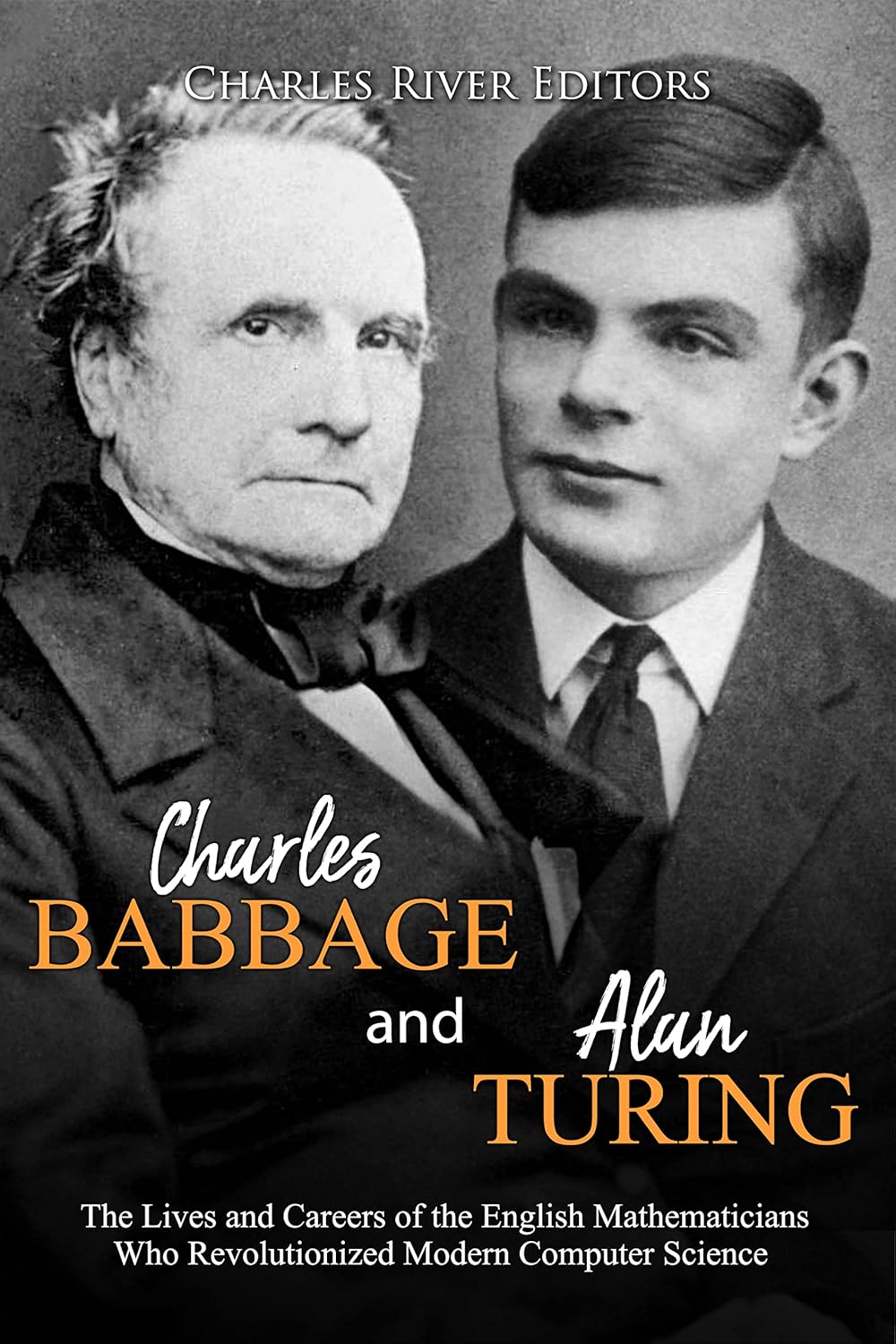
Charles Babbage is often regarded as the pioneer of computers. He designed the first mechanical computer, the Difference Engine, which paved the way for more sophisticated electronic devices, but the fundamental concepts of modern computers are rooted in his Analytical Engine design. The Analytical Engine used a principle borrowed from the Jacquard loom to be programmed. In addition to his work on computers, Babbage had a wide range of hobbies and interests that were discussed in his 1832 book Economy of Manufactures and Machinery. He was also an influential figure in London’s social circles, credited with bringing the “scientific gathering” from France to his popular Saturday evening get-togethers. His diverse work outside of computers has earned him a reputation as one of the most accomplished polymaths of his time.
Charles Babbage, who sadly passed away before he could fully bring his innovative computer designs to life, was still an important figure in the early days of computing. Many of his incomplete machines, like the Difference Engine and Analytical Engine, can be seen on display at the Science Museum in London today. In 1991, a working version of the difference engine was actually built using Babbage’s original plans. The fact that it worked to such high standards as the 19th century allowed us to see that Babbage’s machine would have been successful if he had completed it.
Charles Babbage’s birthplace is unclear, but researchers believe he was born in London, England. According to historical records, his family likely lived at 44 Crosby Row on Walworth Road. A special plaque marks this spot on Larcom Street and Walworth Road, celebrating an important part of his life.
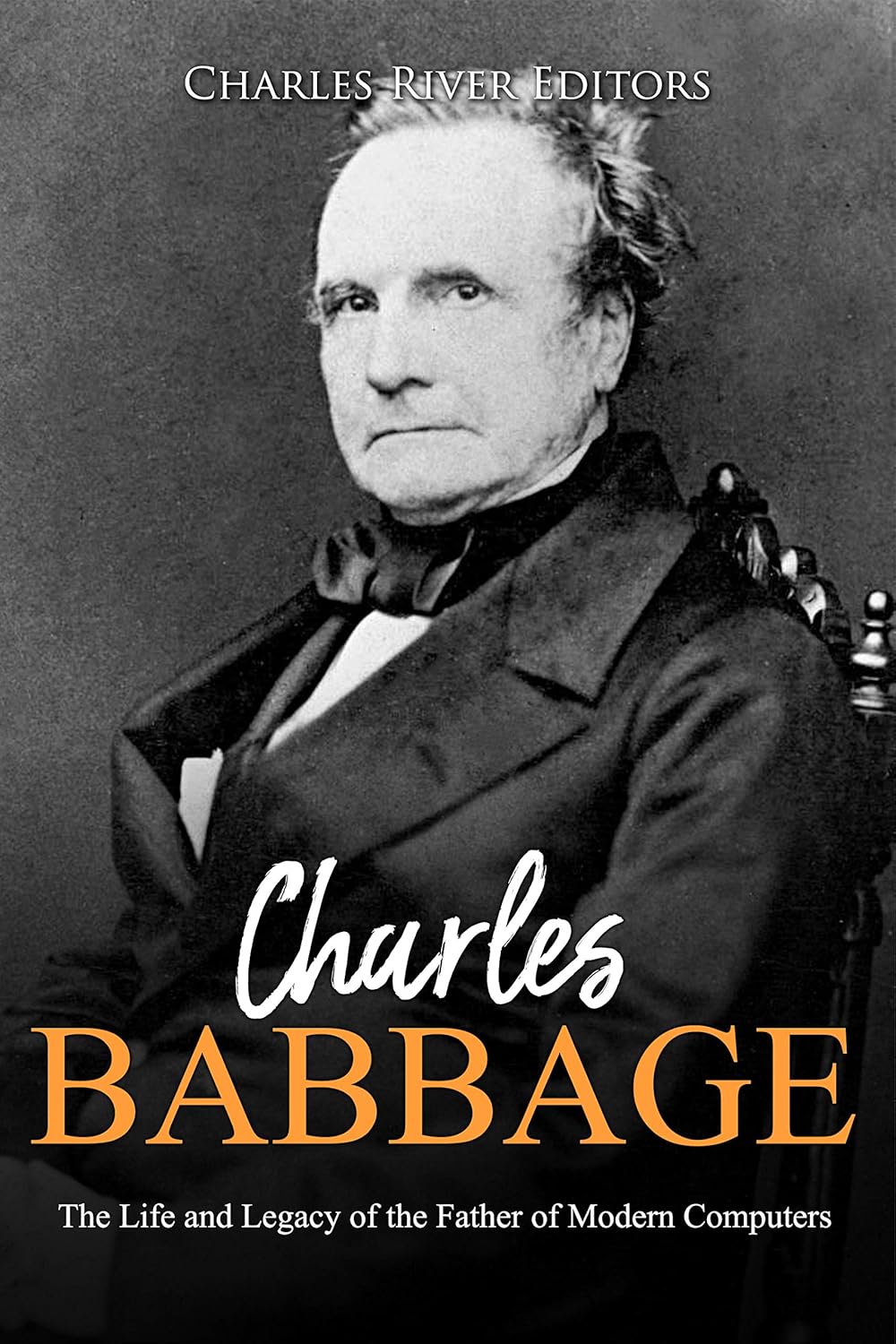
The date of Charles Babbage’s birth was listed in his obituary in The Times as December 26, 1792. However, a relative claimed that he actually had a birthday one year earlier, in 1791. Records from St. Mary’s Parish Register in London confirm that Babbage was baptized on January 6, 1792, which backs up the claim of an earlier birth year.
Charles Babbage was born around 1850 to Benjamin Babbage and Betsy Plumleigh Teape. His dad was part of a bank called Praed’s & Co., which he started in London with his friend William Praed in 1801. In 1808, the Babbage family moved into an old house in East Teignmouth. When Charles was about eight years old, he got very sick and went to school in a country area near Exeter to get better. He went back to school for a little while at a place called King Edward VI Grammar School, but then had to go back to his private tutors because of his health problems.
After attending Holmwood Academy, Charles Babbage joined a school in Baker Street, Enfield, Middlesex, where he studied under Reverend Stephen Freeman. The school’s library sparked Babbage’s interest in math. He continued his education with two additional private tutors after leaving the academy. His first tutor was a clergyman near Cambridge; through this person, Babbage met Charles Simeon and his followers, but the lessons weren’t quite right for him. He was sent back home to study at a school called Totnes, which he attended around age 16 or 17. His second tutor was an Oxford instructor who helped Babbage reach a high level in Classics, making him eligible to join the University of Cambridge.
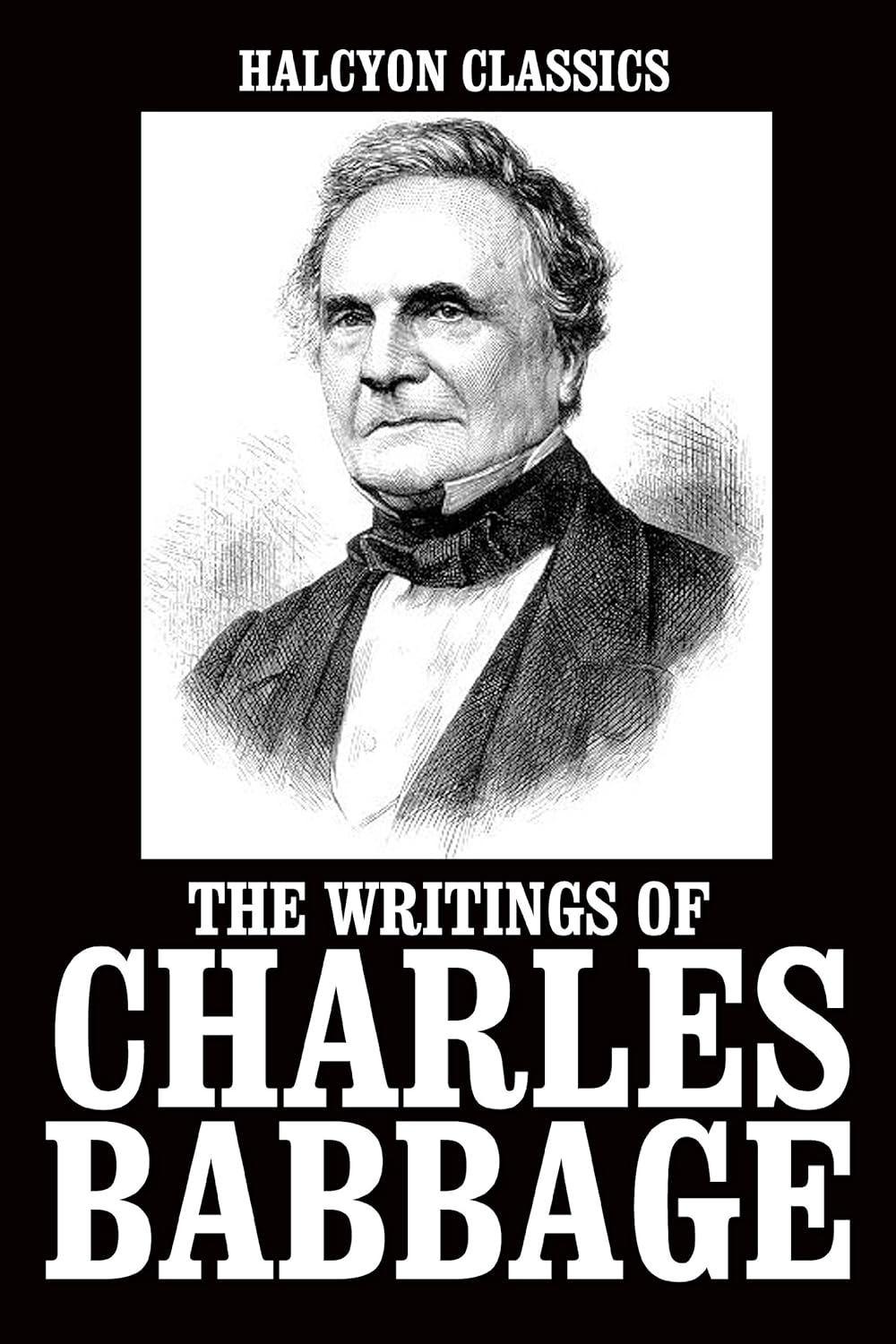
When Charles Babbage arrived at Trinity College in Cambridge, England, in October 1810, he had already learned some basic math concepts on his own. He had studied books by notable mathematicians such as Robert Woodhouse, Joseph Louis Lagrange, and Maria Gaetana Agnesi. Because of this self-study, Babbage was not satisfied with the way math was taught at the university, as it did not match what he already knew.
In 1812, John Herschel, George Peacock, and several friends, along with Edward Ryan, formed the Analytical Society. This group was very close-knit and also befriended Ryan. Meanwhile, Babbage was part of other clubs as a student. One of these clubs, The Ghost Club, focused on studying mysterious events that couldn’t be explained by science. Another club, The Extractors Club, aimed to help its members if they were ever sent to a mental institution.
In 1812, Babbage moved to Cambridge and joined Peterhouse college. He was regarded as the best mathematician there, but he didn’t receive an honors degree. Instead, he got a regular degree in 1814 without having to take any tests. When he defended his thesis, it caused some controversy because some people thought it went against traditional ideas, but it’s unclear if this had anything to do with him not being allowed to take the final test.
Given his experience, Charles Babbage made fast progress. He taught astronomy at the Royal Institution in 1815 and was elected as a Fellow of the Royal Society the following year. After he graduated, however, he struggled to find work and didn’t have much of a career. In 1816, he applied for a teaching job at Haileybury College but wasn’t selected. That same year, Babbage traveled to Paris with William Herschel, where they met famous mathematicians and physicists. They also visited the Society of Arcueil during their trip. The following year, Babbage sent an application to become a professor at the University of Edinburgh, but it was rejected.
With Herschel, Babbage explored the electrodynamics of Arago’s rotations and published their work in 1825. Their ideas served as a stepping stone for further explanation by Michael Faraday. The discoveries made during this time are now part of the theory of eddy currents, but Babbage and Herschel didn’t fully grasp all the connections needed to unify electromagnetic theory, sticking mostly to Ampère’s law about magnetic forces.
Babbage bought the life insurance statistics of George Barrett, who died in 1821 and had not yet published his work. In 1826, Babbage looked at how different organizations handled life insurance policies in his book “Comparative View of the Various Institutions for the Assurance of Lives.” He got interested in this subject after working on a plan to start an insurance company, which was suggested by Francis Baily and discussed in 1824, but never actually took place. Babbage did create actuarial tables for that idea, using data from Equitable Society starting from 1762 onwards.
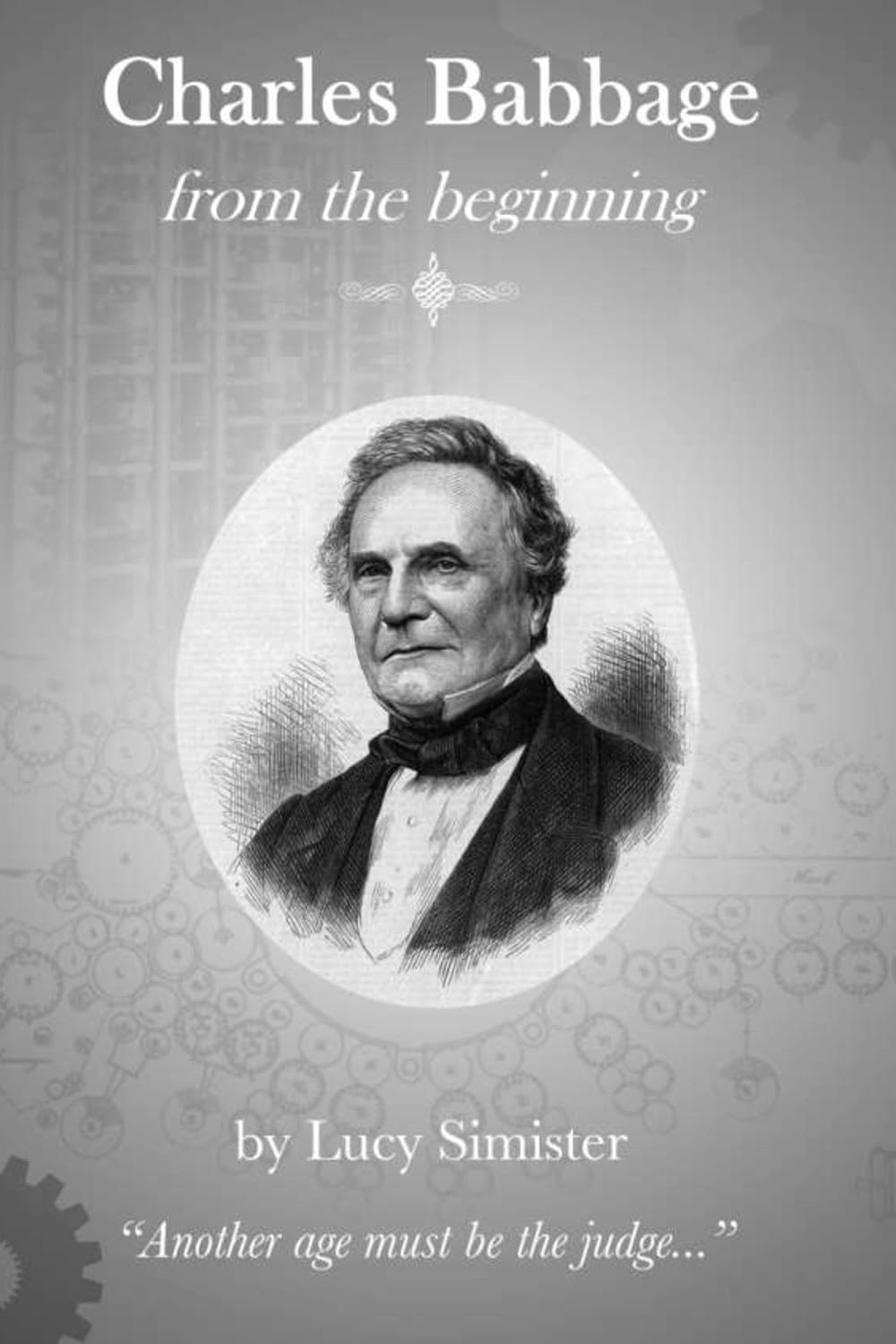
Throughout his entire period, Charles Babbage heavily relied on his father’s financial support due to his complicated marriage situation in 1814. He got married to two Whitmore sisters and built a big family at home in London’s Marylebone neighborhood. After his dad passed away in 1827, Babbage inherited a huge amount of money worth about £100,000 (which is equivalent to around £10.9 million or $15 million today). This made him very wealthy on his own. Following his wife’s death later that year, he spent some time traveling abroad. During one of these trips, in Italy, Babbage met Leopold II, the Grand Duke of Tuscany, which foreshadowed a future visit to Piedmont. When he was visiting Rome in April 1828, he heard from his friend Herschel that he had finally landed a job as a professor at Cambridge University – something he had tried for three times before but had never succeeded (in 1820, 1823, and 1826).
The Royal Astronomical Society was founded by Babbage in 1820 under the name Astronomical Society of London. Its main goal at that time was to simplify astronomical calculations and share data. This objective was closely linked to Babbage’s thoughts on computation, which ultimately led to him receiving a special award from the society in 1824. He received this honor for inventing an engine designed to calculate mathematical and astronomical tables.
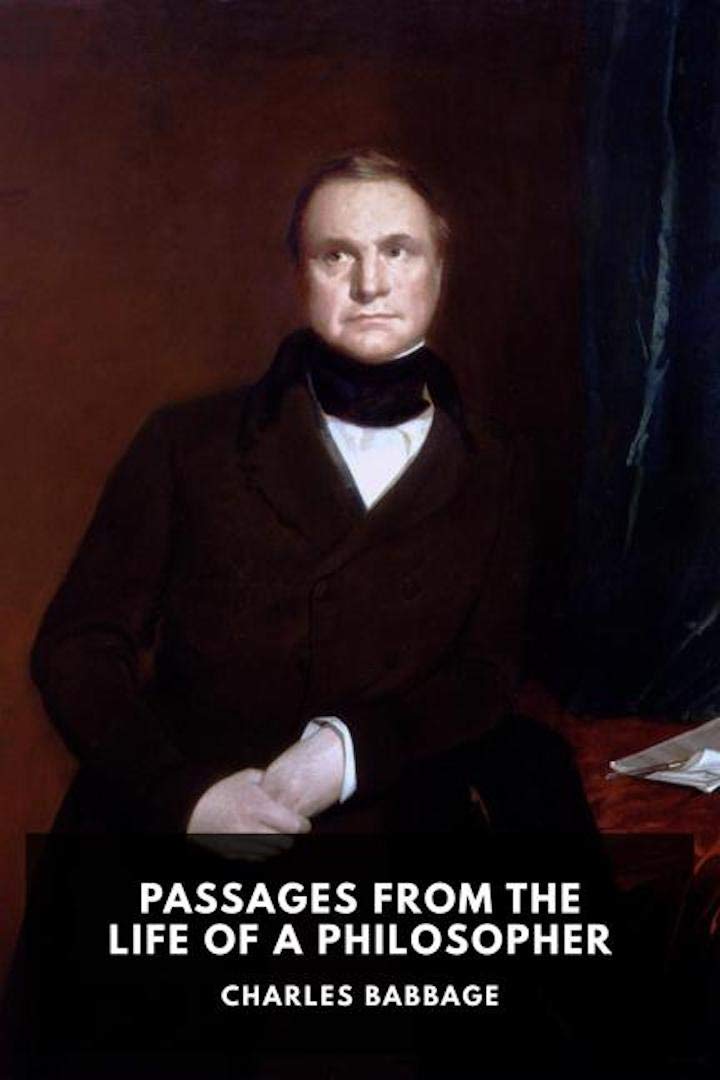
Charles Babbage’s drive to eliminate mistakes in tables through technology had been an idea floating around since Dionysius Lardner wrote about it in 1834 in the Edinburgh Review, with Babbage’s guidance. The background behind these developments is still up for debate. According to Babbage himself, his concept for the difference engine started because of a desire to improve The Nautical Almanac at the Astronomical Society. He and Herschel were asked to work on a trial project where they would recalculate some parts of those tables. Once they had the results, problems arose. This happened in 1821 or 1822, which marked the moment Babbage came up with his idea for mechanical calculation. The issue surrounding The Nautical Almanac is now thought of as a legacy of a disagreement in British science that began after Sir Joseph Banks’ death in 1820.
Babbage studied how to set up a new postal system with his friend Thomas Frederick Colby. They thought it would be a good idea to have one price for all letters sent from one place to another when they introduced the Uniform Fourpenny Post in 1839 and 1840. Colby was also part of the group that started the Society, which is still around today. He was in charge of looking at Ireland’s roads and mapping them out. Babbage and his friend Herschel were there when they did something special with this project – they helped figure out the distance from one point to another on the Lough Foyle river.
The British Lagrangian School started off as just a small idea among undergraduate students, but it had some notable accomplishments during this time. In 1816, a group of mathematicians including Charles Babbage, William Herschel, and Peacock published a translation from French of Sylvestre Lacroix’s calculus textbook, which was considered the most advanced at that time.
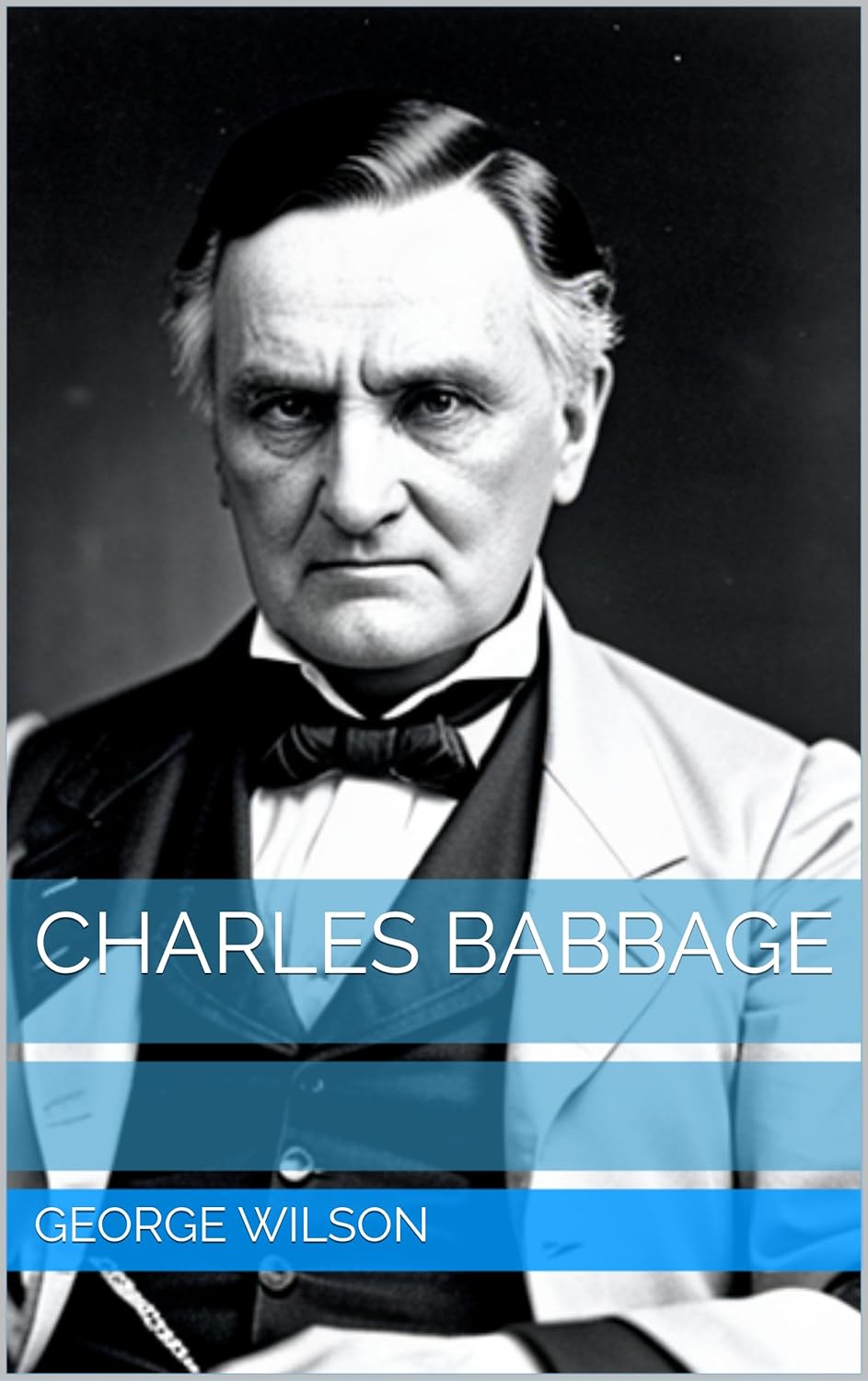
The mention of Lagrange in calculus terms highlights the application of what are now known as formal power series. British mathematicians were using them from around 1730 to 1760, but when they were reintroduced, their use went beyond just notation in differential calculus. Instead, they opened up new areas like functional equations (which included the difference equations that powered the difference engine) and operator methods for solving differential equations. The connection between difference and differential equations was notated using a change from Δ to D, where finite differences became infinitesimal. These mathematical concepts gained popularity as operational calculus and reached a point of diminishing returns, eventually pushing back against the Cauchy concept of limit. Woodhouse had already established his own school of thought, known as the “British Lagrangian School,” which treated Taylor series as formal and laid the groundwork for this development.
In this area, it’s difficult to express function composition because the chain rule can’t be easily applied to higher-order derivatives. Woodhouse was aware of this by 1803 and learned Faà di Bruno’s formula from Louis François Antoine Arbogast, which is now known as a solution to the problem. This idea had been around since Abraham De Moivre came up with it in 1697. Later, Herschel found the method impressive, while Babbage was familiar with it through others. By the time Ada Lovelace mentioned it later on, she realized that it worked well for the analytical engine. Between 1820 and then, Babbage focused heavily on general functional equations and refused to use conventional finite differences or Arbogast’s approach, which linked Δ and D through a simple form of the exponential map. However, thanks to Herschel, he was inspired by Arbogast’s ideas about iteration – creating a function that can be applied multiple times. In an important paper on functional equations in the Philosophical Transactions (1815/6), Babbage stated that his work began with contributions from Gaspard Monge.
From 1828 to 1839, Charles Babbage was a professor of mathematics at Cambridge University. Unlike other professors, he didn’t focus on teaching his classes regularly and instead wrote three books during this time. In 1832, Babbage was honored by the American Academy of Arts and Sciences with the title of Foreign Honorary Member. However, his colleagues weren’t pleased with him: George Airy, who had previously held the same position at Trinity College, thought that Babbage wasn’t taking his teaching duties seriously. Babbage planned to give a lecture on politics in 1831 but didn’t follow through. He wanted universities to be more open and inclusive, to focus more on research, and to have a broader range of subjects in their curriculum. Unfortunately, William Whewell disagreed with Babbage’s plans. For six years, Babbage had a disagreement with Richard Jones over the issue at hand, but he never gave a lecture.
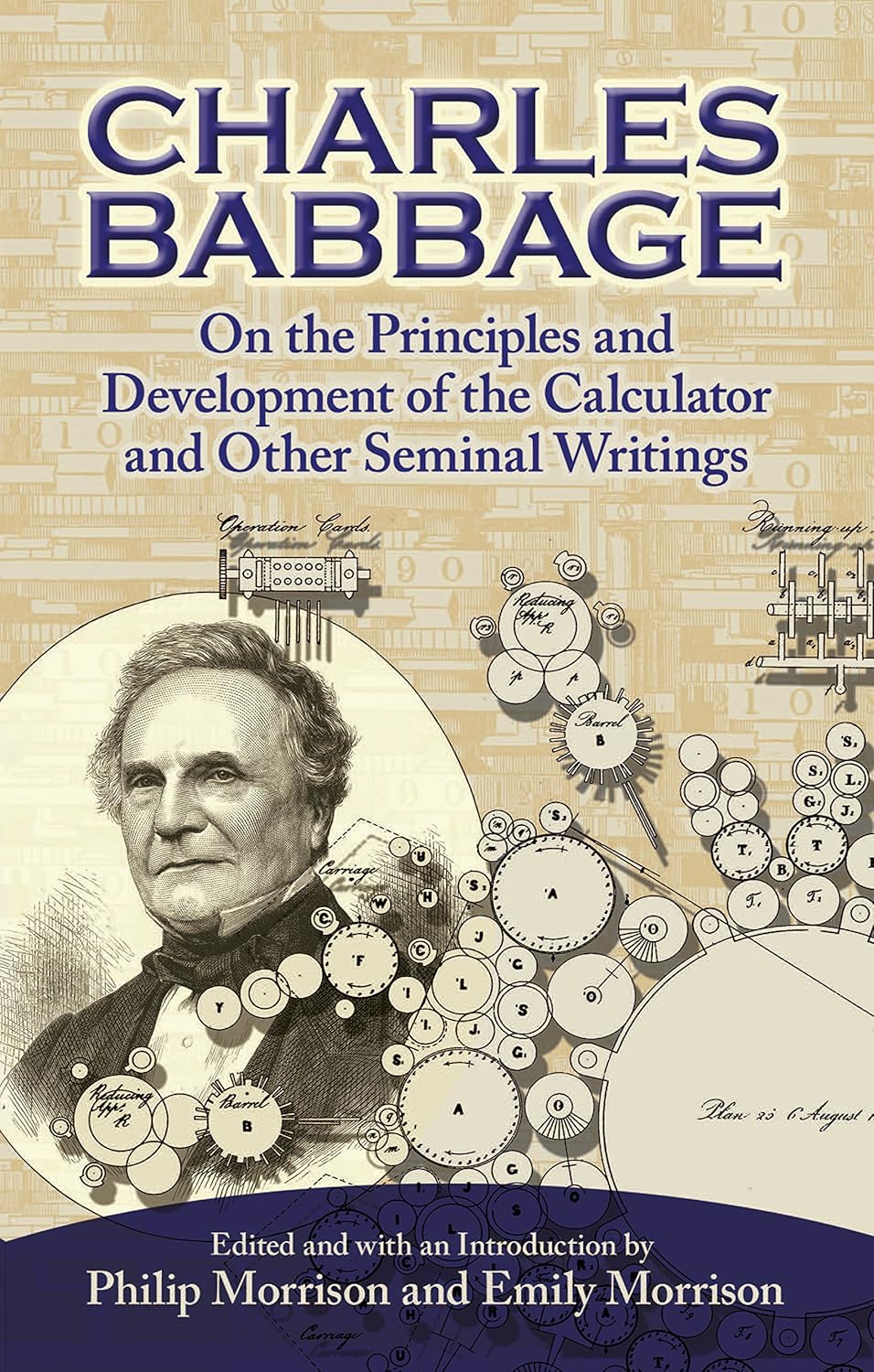
During this time period, Babbage attempted to enter politics. According to historian Simon Schaffer, his ideas from the 1830s included separating the Church of England’s influence in government, expanding voting rights for more people, and giving business owners a greater say. He ran twice as a candidate for the Finsbury borough and came close to winning once, missing out by just a few hundred votes. In one election, he finished last among four other candidates. Babbage also gained a new friend that year, Samuel Rogers, when they met after another unsuccessful campaign. However, his brother Henry Rogers, who supported him in the first place, passed away soon after. Another year later, Babbage was awarded a special honor – being named a Knight of the Royal Guelphic Order, along with two other men, Herschel and Ivory. Unfortunately, this title didn’t automatically give them a special prefix like “Sir,” which is often attached to such honors in foreign countries.
Babbage became known as a strong advocate after his biographers pointed out that many of his books had a sense of rivalry. His book, Reflections on the Decline of Science and Its Reasons, stood out for its scathing critiques. The goal was to boost British science, especially to challenge Davies Gilbert’s leadership in the Royal Society. Babbage wanted to change things because he felt strongly about it, but his efforts were blocked by Humphry Davy’s opposition to him getting a job at the society. When Michael Faraday wrote a response, titled On the Decline of Science in England, Gerrit Moll was behind the pen. The Royal Society chose Duke of Sussex as its leader instead of Babbage, which had little effect on him. However, his ideas about decline helped create a new organization called the British Association for the Advancement of Science (BAAS) in 1831.
In 1831, Mechanics’ Magazine described the followers of Charles Babbage as Declinarians. The magazine wrote about David Brewster in an unkind way, saying he was another leader too. It also pointed out that both Babbage and Brewster had received public funding.
During the time when people were discussing statistics (which includes gathering data) versus making predictions about that data, the BAAS in their Statistics group chose to focus on collecting data. This section was part of the BAAS and was created in 1833 with Charles Babbage as its leader and John Elliot Drinkwater as its organizer. The idea for a statistical society began to take shape at this time. Babbage was the main person representing the society, supported by experts like Richard Jones and Robert Malthus.
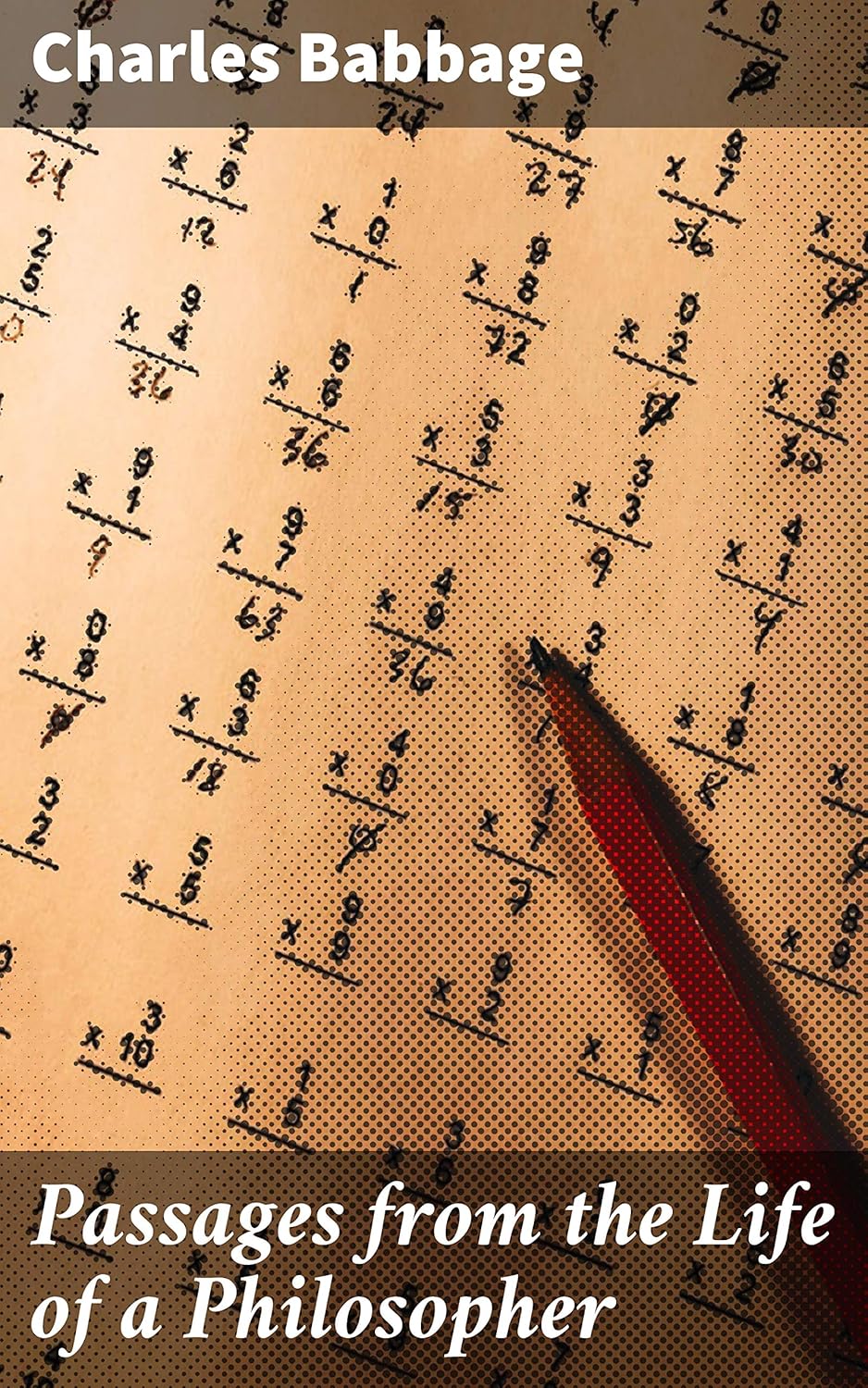
The Economy of Machinery and Manufactures The Economy of Machinery and Manufactures, 1835
This book discusses how machines and factories can improve the economy. It talks about the benefits of using new technologies and tools to make goods more efficiently. The author wants to show that making things better can help people live better lives.
In this book, the writer explores ways to make industries run smoothly and profitably. They look at how machines and workers can work together to increase productivity and reduce costs. The goal is to create a system that benefits everyone involved.
Charles Babbage introduced his notation system for machine parts in 1827. This notation, called “Mechanical Notation,” was created to help him understand his work on the difference engine. The notation also influenced the development of Babbage’s analytical engine. In 1832, Babbage published a book called On the Economy of Machinery and Manufactures, which explained how machines are used in factories. This book is considered an early work of operational research.
In 1846, John Rennie Jr. talked about manufacturing at a meeting of the Institution of Civil Engineers. He mentioned that many people looked up information on manufacturing in encyclopedias. Babbage’s book was actually the first article in the Encyclopædia Metropolitana, where it was written by other experts like John Farey Jr., Peter Barlow, and Andrew Ure.
Babbage also wrote another essay in 1827 called An essay on the general principles which regulate the application of machinery to manufactures and the mechanical arts. This essay became part of the Encyclopædia Metropolitana article in 1829. The essay helped Babbage develop a way to classify machines that, along with discussions about factories, made up the first part of his book. The second part of the book looked at how machines affect domestic and political economies.
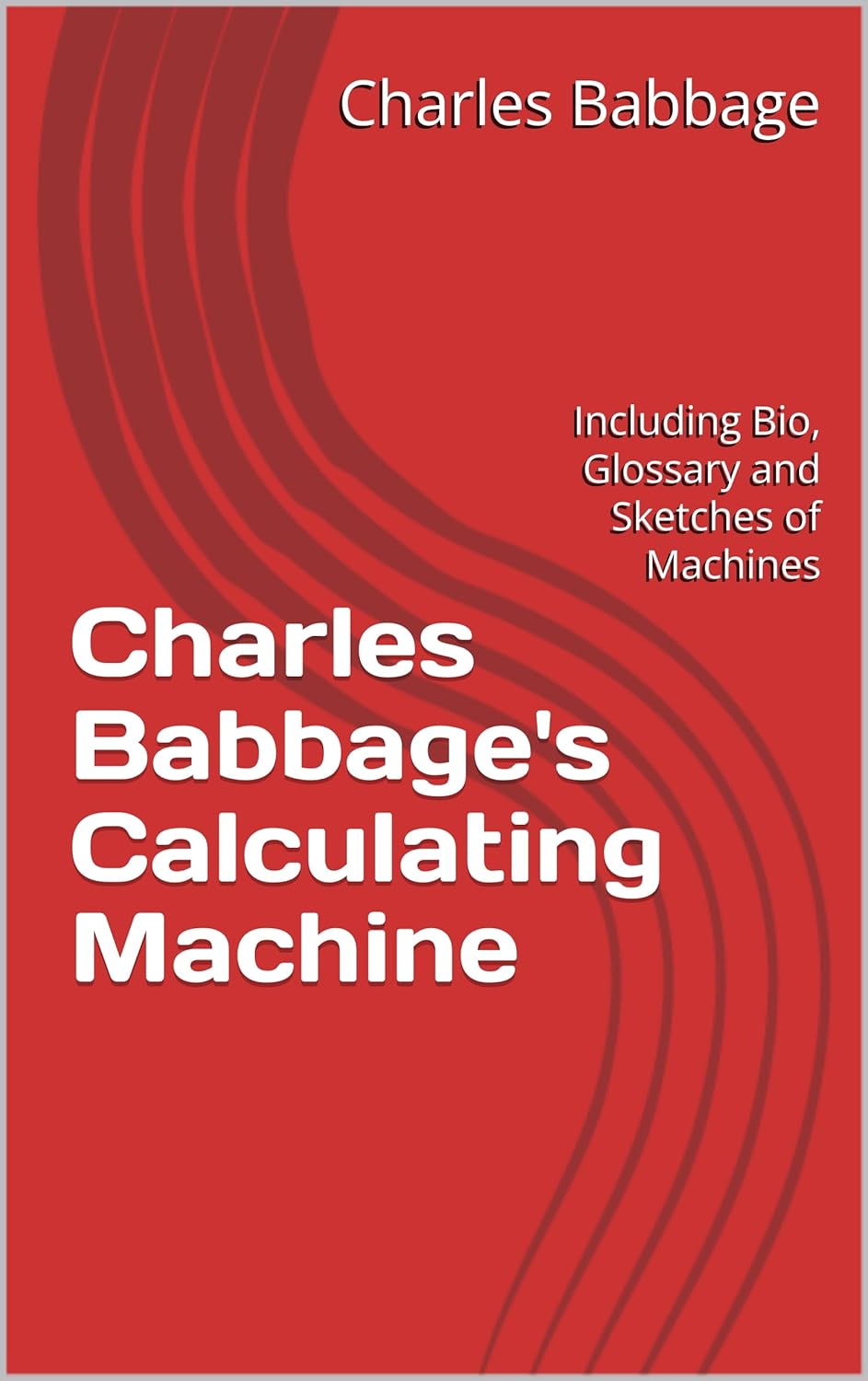
The book became very popular and soon ran out of copies, needing a fourth edition by 1836. Charles Babbage claimed that his work was largely based on what he observed during factory visits both at home and abroad. Initially, the first edition wasn’t meant to explore deeper issues in economics; however, it did in its second version, published late in 1832. This later edition included three additional chapters, one of which discussed how much workers should be paid per piece they produced. The book also introduced ideas on making factories more efficient and fair by sharing profits with employees.
The concept known as “Babbage principle” in the field of Economy of Machinery was first introduced by Charles Babbage. It explains how companies can gain more benefits from splitting labor tasks into smaller parts. In fact, this idea had already been explored by Melchiorre Gioia in his work published in 1815. Later, in 1974, Harry Braverman coined the term for it. Other related theories include Philip Sargant Florence’s “principle of multiples” and the concept of the “balance of processes”.
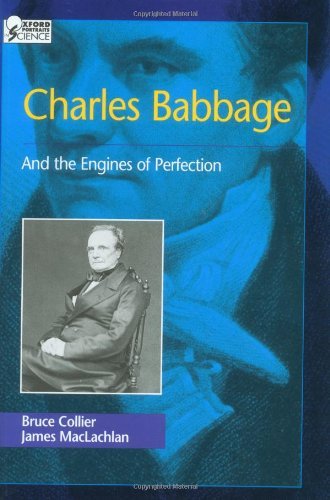
Babbage observed that most skilled workers spend some time on jobs that are beneath their level of expertise. When tasks can be split among many workers, labor expenses can decrease by assigning only high-skill tasks to expensive workers and keeping other tasks for lower-paid workers. He also suggested that training or apprenticeships can be considered fixed costs; however, his method of standardizing tasks provides a way to scale returns, which supports the factory system once again. His perspective on human capital was focused solely on minimizing the time needed to recover training costs.
A key part of Babbage’s work was analyzing how book publishing works financially. He took an unusual approach by revealing the industry’s profit margins from the publishers’ point of view. In fact, he even identified the people behind some unfair business practices. Two decades later, he attended a meeting organized by John Chapman to fight against another powerful cartel called the Booksellers Association.
It’s often said that Charles Babbage had a huge influence on the way factories were designed and run. His ideas about machines and production helped shape the layout of the 1851 Great Exhibition, and they also affected how George Julius Poulett Scrope thought about things. Karl Marx believed that the key to a factory’s success was combining the division of labor with machinery, which was an idea built on what other people like Adam Smith, Babbage, and Ure had said before. However, Marx didn’t agree with Smith about why manufacturers used division of labor in the first place. According to Babbage, it was mainly for making money, not just to be more productive. This idea also affected how people thought about trade and commerce.
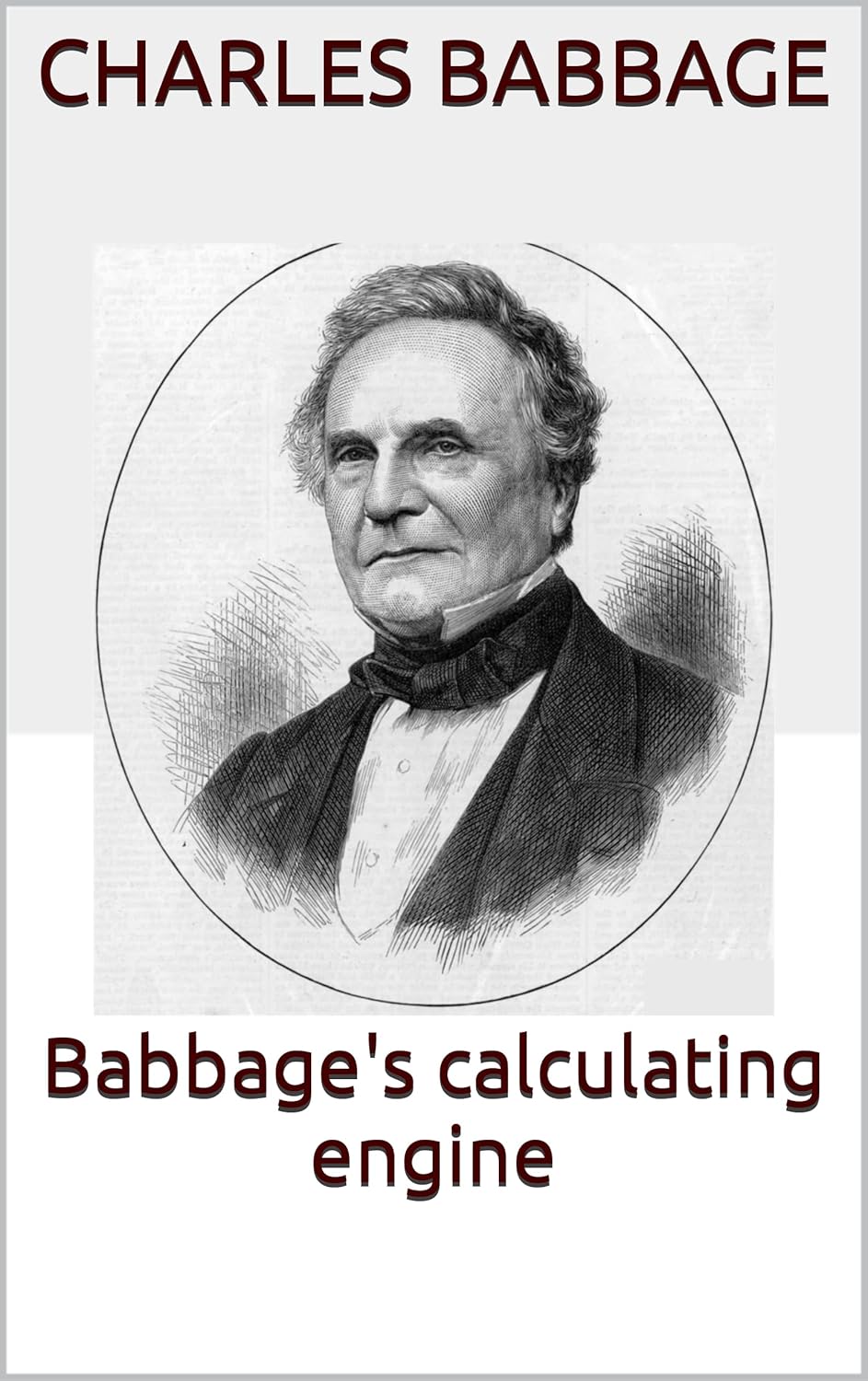
John Ruskin went even further than Babbage to completely disagree with his views on manufacturing. Babbage’s ideas also impacted John Stuart Mill’s economic thinking. George Holyoake considered Babbage’s detailed explanation of profit sharing as significant and in line with earlier thinkers like Robert Owen and Charles Fourier, but he felt it needed a kind and caring business leader to take care of it at the time.
From 1828 to the 1840s, Charles Babbage hosted popular parties on Saturdays that were attended by famous scientists, writers, and people of high social status. Babbage helped make these events popular in Europe by bringing them from France.
In 1830, works by Babbage and Ure were published in French. Two years later, translations came out: one in French by Édouard Biot in 1833, and another in German also that year by Gottfried Friedenberg. A French engineer and writer on industrial organization named Léon Lalanne was inspired by Babbage, but he was also influenced by an economist named Claude Lucien Bergery, who focused on “technology”. In 1870, a scientist named William Jevons linked Babbage’s idea of labor efficiency to his own experiments. The main principle behind Babbage’s work is actually assumed by another scientist named Frederick Winslow Taylor when he developed the concept of scientific management.
Mary Everest Boole believed that her uncle George Everest had a significant impact – through his connections to Indian thought – on Charles Babbage, her husband George Boole, and Augustus De Morgan. It’s hard to imagine how much influence Indian ideas would have had on three influential men like Babbage, De Morgan, and George Boole during the 1830s and 1840s. Can you think about what might have happened if these three people were heavily influenced by Hinduism? How likely is it that this would have changed the way math was done in the 1830s-1860s?
In 1837, Charles Babbage responded to a series of books called the Bridgewater Treatises with his own book, On the Power and Wisdom of God in Creating the World. In this work, Babbage took a side on an argument about how things were made. He believed that the universe was created according to laws that God set in place before anything happened. This idea helped him avoid thinking that everything is constantly changing and needing constant help from a creator.
The book explores natural theology and draws from correspondence between Herschel and Charles Lyell. Babbage presented an idea about God’s power and foresight in creating the universe as a divine creator. In this book, Babbage discussed how science and religion relate to each other; he argued that there is no contradiction between what the Bible says and scientific facts. However, he also said that the Book of Genesis should not be taken literally when it comes to scientific explanations. He believed that if people think these ideas are in conflict, they are mistaken, and instead suggested that while we can trust the stories told by Moses, we can also rely on what our senses tell us. The Ninth Bridgewater Treatise was often referenced in Vestiges of the Natural History of Creation. This book makes a parallel with Babbage’s machines, showing how it might be possible for species to change before they are programmed.
A plate from the Ninth Bridgewater Treatise shows a family of algebraic curves with isolated real points. Some researchers think that Charles Babbage might have been influenced by Indian thinking, possibly through Henry Thomas Colebrooke. According to Mary Everest Boole, Babbage was introduced to Indian thought in the 1820s by her uncle George Everest. Around 1825, [Everest] traveled to England for two or three years and became close friends with both Herschel and Babbage, who was still young at the time. It’s interesting to compare Babbage’s ideas on singular points on curves from his Ninth Bridgewater Treatise with those of his English contemporaries. If we look closely at Babbage’s conception of miracles in his work, it’s clear that he borrowed some ideas from Hindu metaphysics rather than European theology. The English clergy of the time were strongly opposed to Babbage’s book.
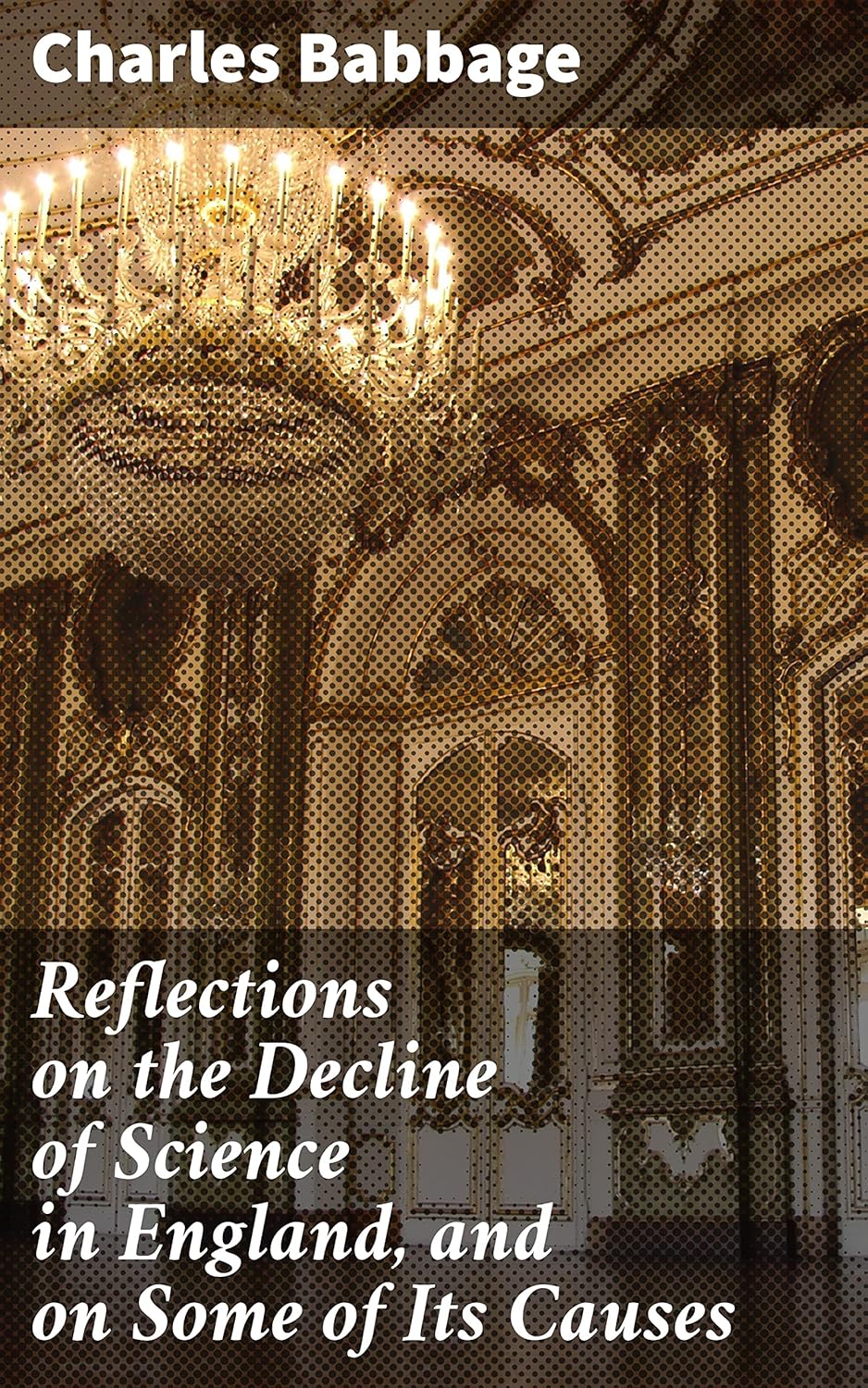
Babbage’s religious views were shaped by his upbringing in the Protestant Christian faith. His family taught him traditional methods for prayer, which he continued to practice throughout his life. Unlike some of his relatives, Babbage’s parents never expressed extreme or intolerant views about their faith. This moderation in their worship also influenced how they addressed God – a habit that Babbage found unbecoming when he later encountered more familiar ways of speaking to God.
In his younger years, Charles Babbage was influenced by Samuel Clarke’s writings on religion. One book in particular had a strong impact – “Being and Attributes of God” (1704). As an adult, Babbage came to believe that the value of Christianity lay not in complicated theology but in its emphasis on kindness and compassion towards all living things. He thought that these virtues were essential for creating a more harmonious world where creatures could feel both pain and happiness. In his own memoirs, titled “Passages from the Life of a Philosopher” (1864), Babbage explored this idea further by identifying three main sources of divine knowledge:
An experience that comes before thinking or understanding A priori or mystical experience was something revealed in the book of Revelation. The person who wrote this believed that looking at things created by God gave him more evidence to believe in God’s existence than anything else. He thought studying nature made sense and led him to share his faith openly. In his writings, he said that we can learn a lot from God’s creations because they are all around us. When people study how the world works, it becomes clear that everything is connected by simple rules. The world around us always reminds us of God’s power and kindness in a way that no human could ever fully explain.
The more we learn about the world, the more we realize how amazing it is and how smart our creator must be. The things people tell each other start to fade away when they get passed down, but looking at God’s creations always shows us something new and exciting about his wisdom, goodness, and strength.
Like Samuel Vince, Charles Babbage also defended the idea that divine miracles are possible. He disagreed with David Hume’s earlier arguments against it by saying that we shouldn’t judge the likelihood or unbelievable nature of an event based on our own limited experiences. Instead, he mentioned that there is a kind of energy from God that can affect things beyond what we normally see as natural laws.
He talked about how we only notice new effects when something surprising happens, but the actual cause might be hidden and not within our line of sight. He believed that even if we can’t observe it, an event doesn’t go against any law of nature because there’s a limit to what humans can see. Humans have very narrow fields of view, and thinking we know everything about the world would be arrogant.
The Illustrated London News (4 November 1871) The British Association was inspired by the Deutsche Naturforscher-Versammlung, which was founded in 1822. It avoided science with a romantic twist and the idea of metaphysics. This led to separating science from literature and professionals from amateur scientists. As someone who belonged to the “Wattite” faction within the BAAS, represented mainly by James Watt Jr., Babbage closely connected himself with industrialists. He wanted to push forward in similar areas and didn’t have much time for the more refined side of its members. In fact, he subscribed to a version of history that saw industrial society as the final stage of human progress (and shared this view with Herschel). However, a disagreement with Roderick Murchison in 1838 led him to step away from further involvement. By the end of that year, he sent his resignation as Lucasian professor and also ended his involvement in the Cambridge struggle with Whewell. His interests shifted towards computation, metrology, and international relationships.
Metrology programme A new project was proposed by Babbage, which aimed to list all known physical constants and compile an extensive book of numerical data. He made significant contributions to the field of precise measurement, building on the work of Johann Christian Poggendorff. The idea behind his project was discussed with Brewster in 1832. Babbage envisioned organizing constants into 19 distinct categories, reflecting some of his unusual interests. Historian Ian Hacking suggests that these categories are connected to Babbage’s unconventional enthusiasm. In 1856, Babbage’s paper “On Tables of the Constants of Nature and Art” was reprinted by the Smithsonian Institution, with an additional note mentioning Arnold Henry Guyot’s contribution to the project, which would eventually become part of the published work.
Accurate measurements were very important in building machines that could perform tasks automatically. These pioneers included Charles Babbage, who is often credited as one of the first people to develop machine tools. Others who also made significant contributions to this field include Henry Maudslay, William Sellers, and Joseph Whitworth.
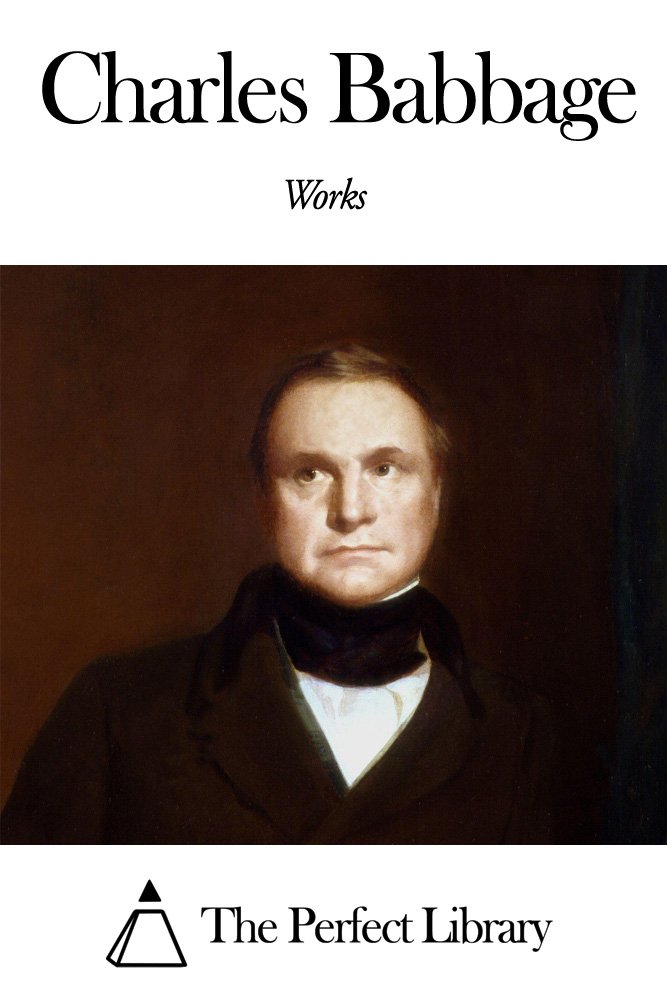
As an engineer and inventor, Charles Babbage befriended Marc Brunel, a skilled engineer. Through his friendship with Brunel, Babbage learned about Joseph Clement, which led him to meet the artisans who worked on machines at Brunel’s factory. In 1830, Babbage introduced Isambard Kingdom Brunel, helping him connect with people who were interested in building the Bristol & Birmingham Railway. Around 1838, Babbage conducted studies that proved the advantages of a broad gauge for trains used by Brunel’s Great Western Railway.
In 1838, Charles Babbage created something called a pilot, which was essentially a metal frame that stuck out from the front of trains and helped push away any objects on the tracks. He also built a special car called a dynamometer car. Before moving to Australia in the 1850s, his eldest son Benjamin worked as an engineer for an important railroad builder named Brunel.
Charles Babbage created an instrument called an ophthalmoscope, which he gave to Thomas Wharton Jones for testing purposes. Unfortunately, Jones didn’t pay much attention to it and didn’t use it at all. It wasn’t until Hermann von Helmholtz independently invented his own similar device that this technology became useful in the medical field.
Charles Babbage made significant advancements in cryptography, although this wasn’t widely recognized for over a hundred years after his passing. In Babbage’s work on tabulation, he categorized letter frequency as number 18. Later, Joseph Henry continued to advocate for studying this area because it could be useful in managing movable type.
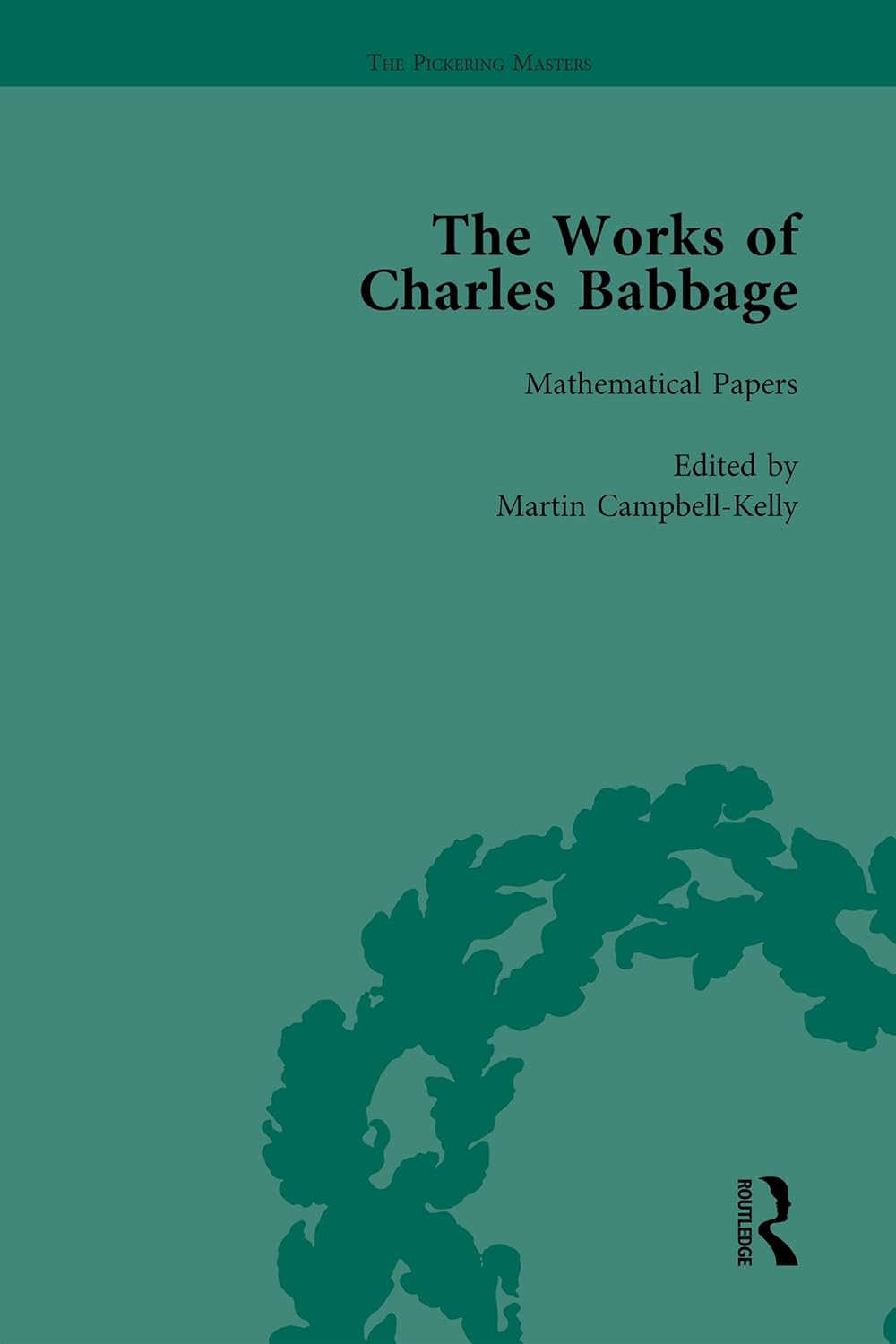
By 1845, Babbage had cracked a code that Henry Hollier’s nephew had thrown down as a challenge, and this breakthrough led him to figure out something important about ciphers based on Vigenère tables. He realized that when you use a keyword to encrypt plain text, the resulting encrypted message falls under a type of math called modular arithmetic. During the Crimean War in the 1850s, Babbage managed to break two encryption methods used by Vigenère: one was an autokey cipher, and the other was what is now commonly known as the Vigenère cipher. This discovery was kept secret for military reasons and wasn’t published. Instead, credit for the achievement went to Friedrich Kasiski, a Prussian soldier who made the same discovery at a later time. However, in 1854, Babbage shared his solution to another Vigenère cipher problem that had been solved before by someone else in a journal called Journal of the Society of Arts. A year earlier, Babbage also wrote a short letter called “Cypher Writing” and published it in the same journal. Even though he came up with these ideas first, it took 40 years for his priority to be officially recognized.
Babbage got involved in famous but not well-liked fights against things that are considered annoying to the public. He once counted how many pieces of glass from a factory were broken and published his findings in 1857. In his list, he showed which causes led to most of these breakages. Of all the 464 broken pieces, only a few were caused by people who were drunk – just 14 out of them.
Charles Babbage had strong feelings against ordinary people (the crowd) in 1864, which led him to write about “Street Problems” and identified 165 issues over an 80-day period. He especially didn’t like street performers, but he hated organ grinders the most. In his writings, he complained about how these musicians disrupted people’s lives. He felt that thousands of people suffered because they wasted their time listening to these noisy performers.
Babbage wasn’t the only person who supported his efforts. Another supporter, Member of Parliament Michael Thomas Bass, also joined the cause.
In the 1860s, Babbage also led an anti-hoop-rolling movement. He believed that boys who rolled hoops were to blame for pushing their iron hoops under horses’ legs, which often caused riders to fall off and even break their legs. As a result, Babbage gained notoriety in this issue, being criticized in a debate in the Commons in 1864 for starting a crusade against popular games like tip-cat and hoop-rolling.
Charles Babbage’s Difference Engine (#1) was partially built after his death by his son Henry Prevost Babbage in 1824. The parts used came from Charles’ own laboratory at the Whipple Museum of the History of Science in Cambridge, England. As part of this project, Babbage developed some of the first mechanical computers ever made. Unfortunately, the machines were never fully completed due to financial issues and disagreements with key figures like George Biddell Airy, who was also the Astronomer Royal at the time.
Charles Babbage led the construction of steam-powered machines that showed some promise in performing calculations automatically. He got financial support from the government for more than ten years, amounting to £17,000, but ultimately, the government lost faith in his project.
Although Babbage’s machines looked very old-fashioned and complicated, they actually shared many similarities with modern computers. In fact, their main parts worked in a way that’s still similar to how we do things today. The parts where information was stored were separate from the part that made instructions, which is now called the “brain” of the computer. This brain could make decisions based on certain conditions and work with different pieces of data. There was also a special part of the machine that helped it talk to the outside world, kind of like how we use our computers to send messages or get information from the internet.
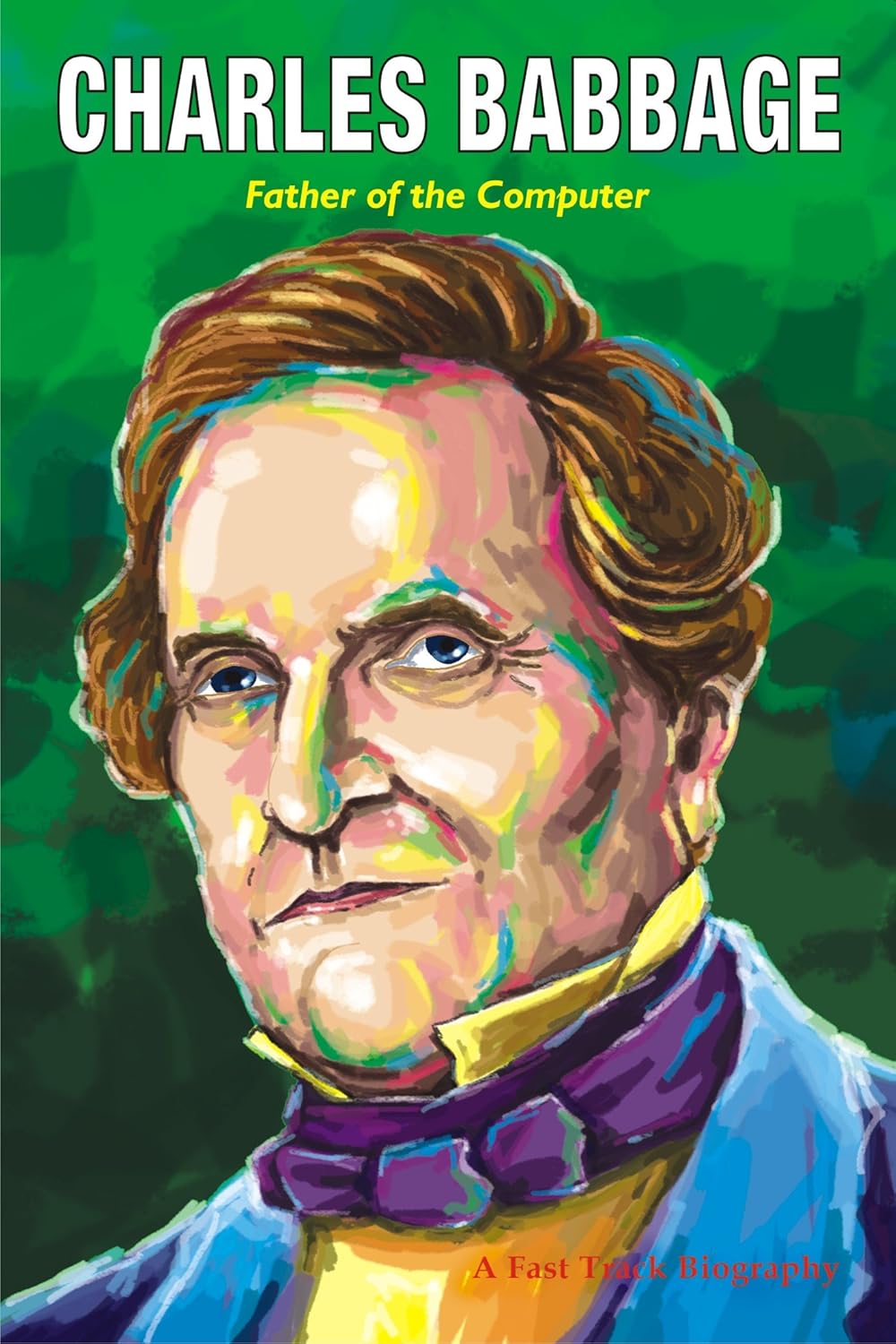
Background on mathematical tables back then was done manually by people called human computers who did calculations by hand. These tables played an important role in navigation, science, engineering, and mathematics. However, there were mistakes that could happen during transcription and calculation.
At Cambridge University, Charles Babbage realized that this process had its limitations and that he could improve it with the help of machines. He explained how his journey towards mechanical computation began when he was studying logarithms in his room in 1812. A table he knew contained many errors caught his attention, leading him to think about using machinery to calculate tabular functions. The French government had created tables using a new method, and several mathematicians worked together to develop the idea of computing these tables using machines. Some mathematicians broke down the process into simple steps, while others calculated the work done by eighty computers who could only perform basic addition and subtraction. This marked the first time that mass production was applied to arithmetic, and Babbage became convinced that machines could take over tasks performed by unskilled workers, making them faster and more accurate.
Seven years later, Charles Babbage became interested in math problems related to calculating tables. He was already familiar with an initiative by French official Gaspard de Prony and its challenges of being put into action. After Napoleon’s wars ended, scientists started talking again on a personal level: in 1819, English scientist Charles Blagden went to Paris to look at the stalled project that was meant to be printed, and he tried to convince the Royal Society to support it. In his writings from the 1820s and 1830s, Babbage talked about de Prony’s project in great detail.
The Difference Engine was a machine created by Charles Babbage that helped him solve mathematical problems. It had two main parts: a mill that turned the gears and a storekeeper that kept track of the numbers. This machine was important because it could do math calculations much faster than humans, but it wasn’t completed during Babbage’s lifetime.
The Science Museum has a replica of Babbage’s Difference Engine No. 2, which is based on his original design.
In 1822, Babbage started working on his difference engine. This machine was designed to solve problems involving polynomial functions by computing specific values automatically without having to multiply or divide numbers. The method used in this device allowed it to calculate series of values quickly and efficiently using something called finite differences.
For a prototype difference engine, Babbage hired Joseph Clement to build it in 1823. Clement was very skilled at his work and used high-quality machine tools that were quite complicated. Because the cost of building these machines was standard at the time, Clement could charge customers for their construction, and he would also own them himself. However, over the costs around 1831, Babbage and Clement had a disagreement that led to a problem in their working relationship.
Some parts of the early prototype are still on display at the Museum of the History of Science in Oxford. This original design evolved into what’s known as the first difference engine, but it never got finished. The completed portion of this machine is now housed at the Science Museum in London. If built, this difference engine would have had about 25,000 parts and weighed over 13 tons, standing eight feet tall. Despite receiving enough money to complete the project, Babbage was unable to finish it. Years later, from 1847 to 1849, he created detailed drawings for an improved version called “Difference Engine No. 2,” but the British government didn’t provide him with any more funding. Finally, using his original plans and old manufacturing techniques, a copy of this machine was built between 1989 and 1991. It successfully ran its first calculation at the Science Museum in London, producing results to 31 digits. Eight years later, in 2000, the museum finished building the printer Babbage had designed for the difference engine.
Completed Models The Science Museum has built two working Difference Engines based on Babbage’s designs for the second model. One of these machines belongs to the museum, while the other was made by technology millionaire Nathan Myhrvold and put on display at the Computer History Museum in California in May 2008. Unlike copies, these models are actual replicas of the original machines built by Babbage.
The part of the mill that houses the printing mechanism for Charles Babbage’s Analytical Engine is now on display at the Science Museum in London.
After his earlier attempt at creating the Difference Engine failed, Babbage focused on designing an even more advanced machine called the Analytical Engine. He enlisted the help of C.G. Jarvis, a skilled draughtsman who had previously worked with Clement. The Analytical Engine represents a significant milestone in the development of computing technology, marking the shift from simple arithmetic to full-fledged general-purpose computation. Its significance is largely responsible for solidifying Babbage’s reputation as a pioneer in computer science.
The main breakthrough of the Analytical Engine was that it would be controlled by punched cards: the machine was meant to use loops of Jacquard’s punched cards to run a mechanical calculator, which could take in the results from previous calculations. The engine also included several features commonly used in modern computers, such as sequential control, branching, and looping. It would have been the first mechanical device that could be considered complete in terms of Turing’s theory. Charles Babbage created a series of programs for the Analytical Engine between 1837 and 1840. The first program was finished in 1837. Unlike other machines, the Analytical Engine wasn’t one physical machine – it was more like a line of designs that Babbage worked on until his death in 1871.
Some people think Ada Lovelace made a significant contribution to the engine’s development by coming up with an algorithm that would allow it to calculate a series of numbers. However, some experts disagree about how much Lovelace actually came up with on her own. Because she was one of the first people to work with this type of technology, Lovelace is often called the world’s first computer programmer – even though no programming language had been created yet.
Lovelace also worked on translating and creating literature that supported the project. She explained how the engine’s programming was done using punch cards, saying: “The Analytical Engine creates algebraic patterns just like a Jacquard loom weaves flowers and leaves.” In 1840, Babbage visited Turin to give talks about the Analytical Engine at Giovanni Plana’s invitation. Plana had created an analog computer that acted as a perpetual calendar in 1831. When he arrived in Turin in 1840, Babbage provided the only public explanation of the Analytical Engine and gave lectures on the subject. Later, in 1842, Charles Wheatstone asked Lovelace to translate a paper by Luigi Menabrea, who had taken notes during Babbage’s talks in Turin. Babbage also wanted her to add some of her own ideas to the translation. Fortunato Prandi, who helped interpret at the talks, was an Italian exile and supporter of Giuseppe Mazzini.
Swedish inventor Per Georg Scheutz discussed how the difference engine worked in 1830 and even tried out automated computation. After reading an article by Lardner in the Edinburgh Review in 1834, Scheutz decided to create his own project, questioning whether Babbage’s initial idea could be made real. With the help of his son Edvard, he pushed forward with this new plan. Another Swedish engineer, Martin Wiberg, built a similar engine in 1860.
In 2011, some scientists in Britain came up with an idea for a huge project called “Plan 28”. They wanted to build Charles Babbage’s Analytical Engine, which he had been designing but never finished. The goal was to get people involved and have them help decide what should be built. This engine would have about the same amount of memory as a computer today, and its clock speed would be pretty slow – not much faster than 7 beats per minute! They hoped to finish it by the time Charles Babbage passed away 150 years later, in 2021.
Recent breakthroughs in Micro-Electro-Mechanical Systems (MEMS) and nanotechnology have led to exciting new experiments in mechanical computing. These high-tech advancements promise to work well even in extreme conditions, such as high levels of radiation or very high temperatures. The latest versions of mechanical computation were recently showcased in an article titled “Babbage’s Last Laugh” in a special issue of The Economist, which featured a black cover with the year millennium.
Because he had a connection with the town, Babbage was selected in 2007 to be on the 5-pound note issued by Totnes. An image of Babbage is now included in the section of new British passports that highlights important cultural figures in Britain, introduced in 2015.
On July 25, 1814, Charles Babbage married his wife Georgiana Whitmore at St. Michael’s Church in Teignmouth, Devon. She came from a family with connections to British politics – her brother William Wolryche-Whitmore was a member of Parliament. After their marriage, the couple moved into Dudmaston Hall in Shropshire, where Babbage worked on improving the home’s heating system. They later lived at 5 Devonshire Street in London, starting in 1815.
Charles and his wife Georgiana had eight kids, but only four of them made it through childhood – Benjamin Herschel, Georgiana Whitmore, Dugald Bromhead, and Henry Prevost. Sadly, Charles’ wife passed away in Worcester on September 1, 1827, which was also the year that Charles’ dad, another son named Charles, and their newborn baby boy Alexander both died.
Charles Babbage had children with his wife, Georgiana. Their eldest son was born in 1815 but sadly died when he was just three years old. The next child, Benjamin, was born in 1817 and died when he was four. Georgiana gave birth to another son, Edward, who was also short-lived, dying in infancy. In 1821, the couple welcomed a daughter named Francis.
The family continued to grow, with the birth of Dugald Babbage in 1823. He went on to become a successful person and lived until he was 78 years old. Another child, Henry Prevost, was born in 1824 and grew up to be very smart. Sadly, his twin brother Alexander died when he was just one year old.
Henry Prevost, who was now the youngest son, did what many parents want their children to do: create something that would make them proud. He designed six small demonstration pieces for a machine called Difference Engine No. 1 based on his father’s ideas. One of these pieces was sent to Harvard University and later found by a famous computer scientist named Howard H. Aiken.
Years later, Henry Prevost built another amazing machine called the Analytical Engine Mill in 1910. It was once displayed at a beautiful old house called Dudmaston Hall but is now safely kept at the Science Museum for everyone to see.
Charles Babbage’s brain is on display at The Science Museum.
Babbage spent over 40 years working at his home on Dorset Street in Marylebone, where he passed away at age 79 on October 18, 1871. He was laid to rest in Kensal Green Cemetery in London.
According to Horsley, Babbage died due to kidney problems caused by an infection. Interestingly, he turned down two honors that could have boosted his status: a knighthood and a title of baronetcy. Additionally, Babbage opposed hereditary titles, preferring the idea of life peerages instead.
The autopsy report for Charles Babbage was found and shared with the public by his great-great-grandson in 1983. The original copy has also been made available. Half of Babbage’s brain is kept at the Hunterian Museum in London, which belongs to the Royal College of Surgeons. The other half of Babbage’s brain is shown for everyone to see at the Science Museum in London.
Half of Charles Babbage’s brain is stored at the Hunterian Museum in London. The other part is displayed at the Science Museum in London.
As an Amazon Associate, I earn from qualifying purchases.
- 19th Century (16)
- 19th Century Inventors (16)
- 20th Century (1)
- 20th Century Inventors (1)
Leave a Reply